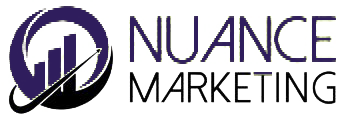Creating an effective landing page for a service business is crucial for converting visitors into leads or customers. A well-designed landing page should be focused, persuasive, and optimized for conversions. Here are some key steps to create a good landing page for your service business:
- Set Clear Goals:
- Determine the primary goal of your landing page. Is it to collect leads, encourage sign-ups, or promote a specific service? Your design and content should align with this goal.
- Craft a Compelling Headline:
- Create a clear and attention-grabbing headline that communicates the value of your service. Use persuasive language to entice visitors to learn more.
- Use Engaging Visuals:
- Incorporate high-quality images or videos that are relevant to your service. Visual content can capture visitors’ attention and convey your message effectively.
- Write Persuasive Copy:
- Develop persuasive and concise copy that highlights the benefits of your service. Use clear and compelling language to explain how your service can solve customers’ problems or fulfill their needs.
- Create a Strong Call to Action (CTA):
- Place a prominent and action-oriented CTA button on your landing page. The text on the button should be specific and encourage visitors to take the desired action (e.g., “Get Started,” “Request a Quote,” “Sign Up Today”).
- Provide Social Proof:
- Include testimonials, reviews, or case studies from satisfied customers. Social proof can build trust and credibility with visitors.
- Highlight Key Features or Benefits:
- Use bullet points or a section to list the key features or benefits of your service. This helps visitors quickly understand what sets your service apart.
- Keep it Simple and Focused:
- Avoid clutter and distractions on your landing page. Remove unnecessary links or elements that might divert visitors’ attention away from your CTA.
- Mobile Responsiveness:
- Ensure your landing page is responsive and displays correctly on both desktop and mobile devices. Many users access websites from mobile devices, so a mobile-friendly design is essential.
- Optimize for Speed:
- Page load speed is critical for user experience. Compress images, minimize code, and use reliable hosting to ensure fast loading times.
- A/B Testing:
- Consider running A/B tests to optimize various elements of your landing page, such as headlines, CTA button color, or images. This can help you identify what resonates best with your audience.
- Capture User Data Sparingly:
- If your goal is lead generation, only ask for essential information in your forms. People are more likely to complete forms with fewer fields.
- Privacy and Trust Seals:
- If applicable, display privacy policy links and trust seals to reassure visitors about data security and trustworthiness.
- Follow-up Mechanism:
- Have a system in place to respond promptly to inquiries or submissions. Automate email responses or set up notifications to ensure you don’t miss potential leads.
- Analytics and Tracking:
- Implement analytics tools like Google Analytics to monitor the performance of your landing page. Track conversion rates, traffic sources, and user behavior to make data-driven improvements.
Remember that the key to a successful landing page is continuous optimization. Regularly analyze the performance of your landing page and make adjustments based on user feedback and data insights to improve conversion rates and achieve your business goals.
